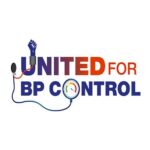The Essential Medicines List (2019)
Cancer treatments: While several new cancer treatments have been marketed in recent years, only a few deliver sufficient therapeutic benefits to be considered essential. The 12 medicines WHO added to the new Medicines List for five cancer therapies are regarded as the best in terms of survival rates to treat melanoma, lung, prostate, multiple myeloma and leukemias cancers.
For example, two recently developed immunotherapies (nivolumab and pembrolizumab) have delivered up to 50% survival rates for advanced melanoma, a cancer that until recently was incurable.
Antibiotics: The Essential Medicines Committee strengthened advice on antibiotic use by updating the AWARE categories, which indicate which antibiotics to use for the most common and serious infections to achieve better treatment outcomes and reduce the risk of antimicrobial resistance. The committee recommended that three new antibiotics for the treatment of multi-drug resistant infections be added as essential.
Other updates to the medicines list include:
- New oral anticoagulants to prevent stroke as an alternative to warfarin for atrial fibrillation and treatment of deep vein thrombosis. These are particularly advantageous for low-income countries as, unlike warfarin, they do not require regular monitoring;
- Biologics and their respective biosimilars for chronic inflammatory conditions such as rheumatoid arthritis and inflammatory bowel diseases;
- Heat-stable carbetocin for the prevention of postpartum haemorrhage. This new formulation has similar effects to oxytocin, the current standard therapy, but offers advantages for tropical countries as it does not require refrigeration;
Not all submissions to the EML Committee are included in the list. For example, medicines for multiple sclerosis submitted for inclusion were not listed. The Committee noted that some relevant therapeutic options currently marketed in many countries were not included in the submissions; it will welcome a revised application with all relevant available options. The EML Committee also did not recommend including methylphenidate, a medicine for attention deficit hyperactivity disorder (ADHD), as the committee found uncertainties in the estimates of benefit.
The List of Essential (in vitro) Diagnostics
The first List of Essential Diagnostics was published in 2018, concentrating on a limited number of priority diseases – HIV, malaria, tuberculosis, and hepatitis. This year’s list has expanded to include more noncommunicable and communicable diseases.
Cancers: Given how critical it is to secure an early cancer diagnosis (70% of cancer deaths occur in low- and middle-income countries largely because most patients are diagnosed too late), WHO added 12 tests to the Diagnostics List to detect a wide range of solid tumours such as colorectal, liver, cervical, prostate, breast and germ cell cancers, as well as leukemia and lymphomas. To support appropriate cancer diagnosis, a new section covering anatomical pathology testing was added; this service must be made available in specialized laboratories.
Infectious diseases: The list focuses on additional infectious diseases prevalent in low- and middle-income countries such as cholera, and neglected diseases like leishmaniasis, schistosomiasis, dengue, and zika.
In addition, a new section for influenza testing was added for community health settings where no laboratories are available.
General test: The list was also expanded to include additional general tests which address a range of different diseases and conditions, such as iron tests (for anemia), and tests to diagnose thyroid malfunction and sickle cell (an inherited form of anemia very widely present in Sub-Saharan Africa).
Another notable update is a new section specific to tests intended for screening of blood donations. This is part of a WHO-wide strategy to make blood transfusions safer.
“The List of Essential Diagnostics was introduced in 2018 to guide the supply of tests and improve treatment outcomes,” said Mariângela Simão, WHO Assistant Director-General for Medicines and Health Products. “As countries move towards universal health coverage and medicines become more available, it will be crucial to have the right diagnostic tools to ensure appropriate treatment.”







